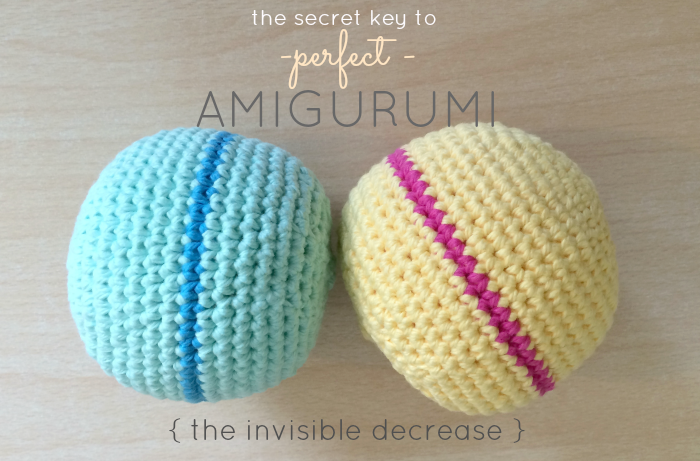I’ve created this post as an amigurumi for beginners resource. So if you’re just learning the basics, this is the right place! Plus, there’s a free amigurumi ball pattern at the end so you can practice your skills right away.

What Is Amigurumi?
Amigurumi is the Japanese art of crocheting small stuffed toys, characters, and objects. These projects are typically worked in the round using single crochet stitches and are shaped by increasing and decreasing the stitch count. Popular examples include crochet animals, dolls, food items, and cartoon-inspired characters.
Amigurumi is beginner-friendly, uses simple stitches, and the projects are quick to finish. They also make excellent gifts and conversation pieces.
Key Features of Amigurumi:
- Made with single crochet stitches
- Worked in the round (spiral)
- Includes increases and decreases for shaping
- Typically uses a small hook for tight stitches
- Pieces are stuffed and sewn together
Amigurumi For Beginners: 4 Essential Tips
These techniques will help improve the look and feel of your projects from the very beginning.
1. Use a Smaller Crochet Hook
Using a small hook (like 3.5 mm) with worsted weight yarn results in tighter stitches. This helps eliminate visible holes between stitches and prevents stuffing from peeking through. Many beginners use hooks that are too large, which can make finished toys look loose or floppy.
Recommended pairing:
- Yarn: Worsted weight acrylic (like Red Heart)
- Hook: 3.5 mm (E hook)
2. Practice the Invisible Decrease
The invisible decrease creates a smoother finish than a standard decrease. Most amigurumi patterns simply say “dec” without specifying the method, but switching to invisible decrease will noticeably improve your work.

How to Make an Invisible Decrease:
- Insert your hook into the front loop only of the next two stitches.
- Yarn over and pull through both loops (2 loops on hook).
- Yarn over and pull through both loops to complete the stitch.
This technique prevents bulkiness and keeps shaping nearly seamless.




3. Take Your Time with Assembly
Attaching limbs, ears, and other parts evenly can make or break your finished project. Before stitching anything down:
- Plan placement ahead of time
- Use stitch markers to outline where each piece will go
- Whip stitch tightly and secure all ends cleanly
For more on attaching limbs, check out this guide to sewing amigurumi limbs.
4. Just Keep Practicing
Amigurumi is skill-based—and like any craft, your work improves with repetition. Start with small, simple shapes and build up to more complex designs. One of the best beginner practice pieces? A basic amigurumi ball.
Free Beginner Amigurumi Ball Pattern
Master this ball, and you’ll have the foundation for most amigurumi designs. Use it to practice working in the round, increasing, decreasing, and perfecting your tension.
Materials:
- Worsted weight yarn
- 3.5 mm crochet hook
- Yarn needle
- Fiberfill stuffing
Stitch Key:
- sc = single crochet
- inc = increase (2 sc in one stitch)
- dec = decrease (1 sc over 2 stitches)
Pattern:
Start with a magic ring.
Round 1: 8 sc in ring (8)
Round 2: inc in each st (16)
Round 3: sc, inc repeat around (24)
Round 4: 2 sc, inc repeat around (32)
Round 5: 3 sc, inc repeat around (40)
Round 6: 4 sc, inc repeat around (50)
Rounds 7–11: sc around (50 per round)
Optional stripe (contrasting color):
Round 12: sc around (50)
Return to main color:
Rounds 13–17: sc around (50)
Now start decreasing:
Round 18: 4 sc, dec repeat around (40)
Round 19: 3 sc, dec repeat around (32)
Round 20: 2 sc, dec repeat around (24)
Start stuffing with fiberfill.
Round 21: 1 sc, dec repeat around (18)
Round 22: dec in every st (12)
Round 23: dec in every st (8)
Fasten off and weave in the end.



Amigurumi is fun, rewarding, and beginner-friendly once you learn the fundamentals. Using a smaller hook, mastering the invisible decrease, and taking care with assembly will dramatically improve your results—even on your first few projects.
Looking for more amigurumi patterns and tutorials? Join the Just Be Crafty email list or follow along on YouTube for step-by-step videos and cozy crochet inspiration.